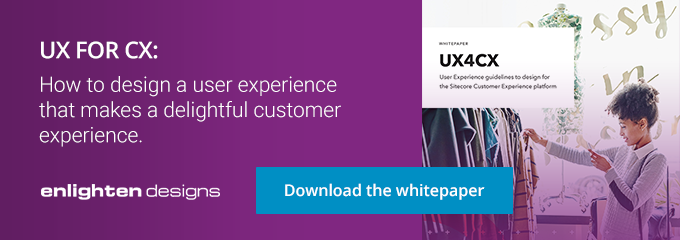What Is a Personalisation Journey?
A personalisation journey is somewhat of a new concept in marketing. It’s related to the idea of a customer journey (which refers to a customer’s experiences with your firm, from the time they first encounter you to when they buy a product or service), yet it’s not the same thing.
The best way to think of a personalisation journey is that it should be part of a customer journey. A personalisation journey is about the customer receiving marketing content that’s relevant and highly contextual every step of the way.
Why Does the Personalisation Journey Matter?
Today, marketing personalisation is critical – customers demand it, and if marketers don’t deliver, woe betides them. According to Segment’s 2017 State of Personalisation Report, just under a quarter of customers are satisfied with the level of personalisation they receive.
Moreover, most marketers haven’t mastered personalisation beyond the most basic level (think beyond geography, device, location, date, or campaign). Paige O’Neill, Sitecore global CMO, noted at a customer event in 2019 that only one in four marketers have the skills and resources to tailor marketing personalisation to meet customer needs.
How Can You Launch a Successful Personalisation Journey?
Here are the three steps involved in launching a successful personalisation journey:
- Identify your most important customers
- Prioritise customer segments
- Personalise content
Identify Your Most Important Customers
Remember, not all of your customers are equally valuable to your firm. There are customers that are a pain to deal with – they quibble over every point, especially the invoice. They may also criticise you, either directly or indirectly, questioning why they’re working with you when they could be doing business with someone else.
Valuable customers, on the other hand, want to work with you. They believe in what you do. To understand who your valuable customers are, you need to segment them into groups.
How to Segment Customers into Groups
A customer segment refers to a group’s shared characteristics and the high probability that they’d benefit from a shared experience. Here are some common examples of customer segments:
- Audience types
- Their stage in the customer journey
- Their product or service category
- Industries
- Personas

Prioritise Customer Segments
Once you’ve segmented your customers, you need to prioritise those segments to determine which are the most valuable to your firm. There are three principles to prioritising customer segments:
- Potential
- Importance
- Ease
Potential
There are two ways to look at potential: there’s the potential to increase visitor engagement by personalising the experience, and the potential ROI from marketing personalisation. You should look at potential in both senses.
What does ‘potential’ look like in real life? You have to fulfil these two conditions for a customer to have potential:
- The customer will most likely visit your site, and there’s a high potential that he or she will buy from you
- You’ll see high ROI from marketing personalisation
Importance
The second principle is about how important a segment is – how many customers are in a segment?
Larger segments are most likely more valuable, while smaller segments are probably less valuable.
Ease
How easy is it to classify a customer into a given segment? The easier it is, the more valuable the customer is.
We’ll give you an example: Jill isn’t in the C-suite, but she’s tasked with doing research for a decision-maker. She downloads some of the content that a c-suite member might download during his or her search for a new product or solution, yet she hasn’t taken other steps in the customer journey, such as signing up for events or scheduling a free demo. Because it’s difficult to classify her into a buyer category, Jill isn’t valuable as a customer (although her boss might be).
Personalise Content
The next step in planning a personalisation journey is personalising content. Now that you know who your most important customers are, you can personalise content so it meets their needs.
It’s helpful to think of marketing personalisation as an if-then formula – if X happens, you need to do Y with Z (insert link to Sitecore PDF?). Here’s an example: if a visitor comes to your website, nurture your visitor by personalising the experience by not showing the newsletter signup window if that person has visited before.
‘Think of marketing personalisation as a formula: if X happens, you need to do Y with Z’
Keep the three principles we mentioned earlier: potential, importance, and ease. Ask yourself these three questions:
- What’s the business impact that justifies the potential? Are you going to reach a specific segment that doesn’t convert at the same rate as others?
- What data insights make this personalisation effort important? Will you see greater traffic, higher engagement, or an increase in another critical metric as a result?
- How easy is it to implement this scenario? One example would be that it would be particularly easy to identify a customer as belonging to a particular segment.
A good way to map the personalisation journey is to determine the visitor’s intent or need – what is the visitor planning on doing, or what do you need/want the visitor to discover? Next, think about the channel – is it search, referral, direct, etc.? Then, think about the next three to four pages the visitor comes to, starting with the entry page: putting the principles above in place, think about what you want the visitor (and your company) to get out of the site visit.
Enlighten Designs: Helping You Plan Your Customers’ Personalisation Journey
Since 1998, Enlighten Designs has delivered excellent user experiences to its clients. Our expertise in user-centred design allows us to design products and services that are a delight to use. To learn more about how you can make user-centred design work for you, download our User Experience Guidelines white paper.

